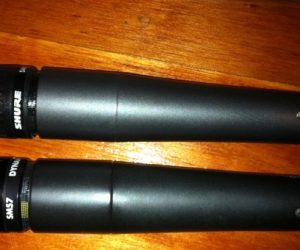
Top 5: Matt Wallace
From his parents’ spare room to the big time, American producer Matt Wallace has worked with the likes of The Replacements, Faith No More, and Maroon 5. Matt outlines the five tools he considers essential to his work.
By Joe Matera
26 September 2022
AVID LO-FI
I really like Avid’s stuff, the Lo-Fi in particular, as it’s the only plugin that helps me to really shape and fit sounds into a track. If I’m trying to remove some over-emphasised frequencies I could use a high- or low-pass filter but this can dull the audio. The Lo-Fi plugin is really nice in this situation because rather than touching the EQ you can dial back the sample rate to carve out some of those extremes instead. It can also be used to tame the more brittle sound of digital audio generally, making things sound a little more ‘analogue’. The Lo-Fi is really good for that and is a go-to plugin on 90% of my mixes.


SOUNDTOYS ECHOBOY
The EchoBoy is very intuitive to use especially when compared to those of the old, analogue world. Back in the day, you had your tempo and a little chart, and from that you tried to calculate how many milliseconds the delay needed to be. But even then it would never quite match up. The nice thing about this plugin is that it’s instantaneous. You can also set it for quarter, half, or eighth notes, and dotted or triplet subdivisions too. It’s super easy without all the calculations, so I can get to mixing much quicker. The EchoBoy is a fantastic plugin and has been quite the game changer.
SLATE TRIGGER 2
The foundational aspect of most mixes is that the kick and snare should sound solid and present. Sometimes when I’m mixing, the drums don’t sound as good as I’d like. Adding EQ, compression, reverb, or side-chain compression to compensate can limit what I can do with them in the mix. The nice thing about this Slate plugin is its multi-layered sample triggering. Different velocity samples are fired off depending on how hard the drum is struck. You can hear the snare close down a little bit and then open up, as the drummer varies their shots, so it’s very intuitive in that it follows the dynamics of a track. The trigger threshold parameters are easy to set, and you can control the blend of the original signal. It’s a really terrific plugin. I may use it on the tom-toms too.


IZOTOPE OZONE IMAGER
Sometimes you have a monaural track — generally background vocals, or a guitar track — and although you can create a sense of space by spreading it out with reverb, you may only want a sense of width. And then there’s the case of using a short delay, hard-panned to give a thicker, wider sound. The problem here is that when it is summed to mono you may get an undesirable phasing, comb-filtered effect. But with the Ozone Imager you can take a monaural source — such as a keyboard or background vocal — add the Imager plugin and it’ll spread it out as narrow or wide across the stereo field as you like. [[[Sometimes I like to make a copy of the lead vocal track, put the Lo-Fi on that, and then add the Imager so that it sits around and behind the clean lead vocal without obscuring it.]]] This is a nice way to get grit without losing the articulation of the main vocal track.

NATIVE INSTRUMENTS SUPERCHARGER
This is a really interesting compressor. It does what a normal compressor does, but it also has two extra buttons: ‘Punch’ and ‘Dirt’. The Supercharger is my go-to for side-chain compression on drums. When you engage the ‘Punch’ setting it focusses the midrange. When you toggle ‘Dirt’ it will add a bit more grit, and it’s instant excitement. I’ll also put the supercharger across a mix, press ‘Punch’ or ‘Dirt’ — depending on how in-your-face I want it — and create a sense of excitement, which is really cool. It’s an excellent tool to have. What appeals to me most about the Supercharger and my other favourite plug-ins is that I’m able to push them too far, and then peel it back to where it sounds best to me.















RESPONSES